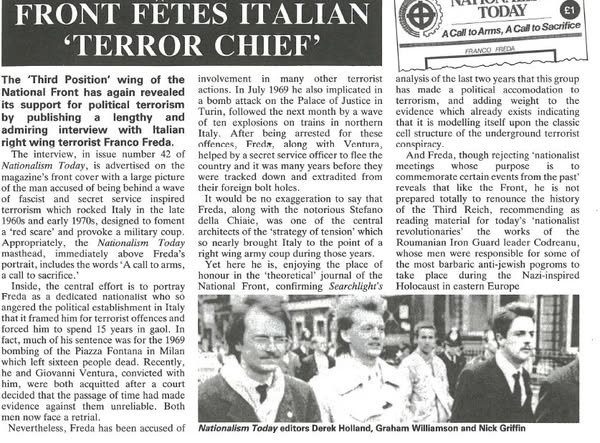
Fifty five years ago today, in December 1969, members of the Italian fascist terror group Ordine Nuovo detonated a bomb at the Banca Nazionale dell’Agricoltura, in Piazza Fontana in Milan, killing 17 people and wounding 88 more. Other bombs were planted in Milan and Rome on the same day.
It was a key moment in the far right’s “Strategy of Tension”, a campaign of terrorist violence carried out in collusion with sections of Italy’s intelligence services, intended to be blamed on the left and lay the ground for a far right coup d’etat.
It was a key moment in the far right’s “Strategy of Tension”, a campaign of terrorist violence carried out in collusion with sections of Italy’s intelligence services, intended to be blamed on the left and lay the ground for a far right coup d’etat.
At first, this succeeded: anarchists became the initial focus of the investigation and one, Giuseppe Pinelli, died after falling from a police station window, inspiring Dario Fo’s play “The Accidental Death of an Anarchist”. It soon became clear however, that Ordine Nuovo was behind the bombing and members of the organisation were eventually convicted.

One of its most prominent members, initially convicted of participation in the attack, was Franco Freda (above) who was lauded in the UK National Front’s ‘Nationalism Today’ in 1988 after he had been acquitted on appeal, a link exposed in Searchlight (below). Then, the NF was under the control of the ‘Political Soldier’ faction which looked to Italian terrorists like Roberto Fiore for inspiration.

At the time the NF was hailing him, however, Freda remained convicted of other terror offences and in 2004 an Italian court reaffirmed the conclusion that he was involved in Piazza Fontana even though, because of his earlier acquittal, he could not be retried.
In response to the bombing the Italian trade union movement called a general strike and at the funerals of the victims over 300,000 people turned out on the streets in demonstrations of public anger at the outrage.





